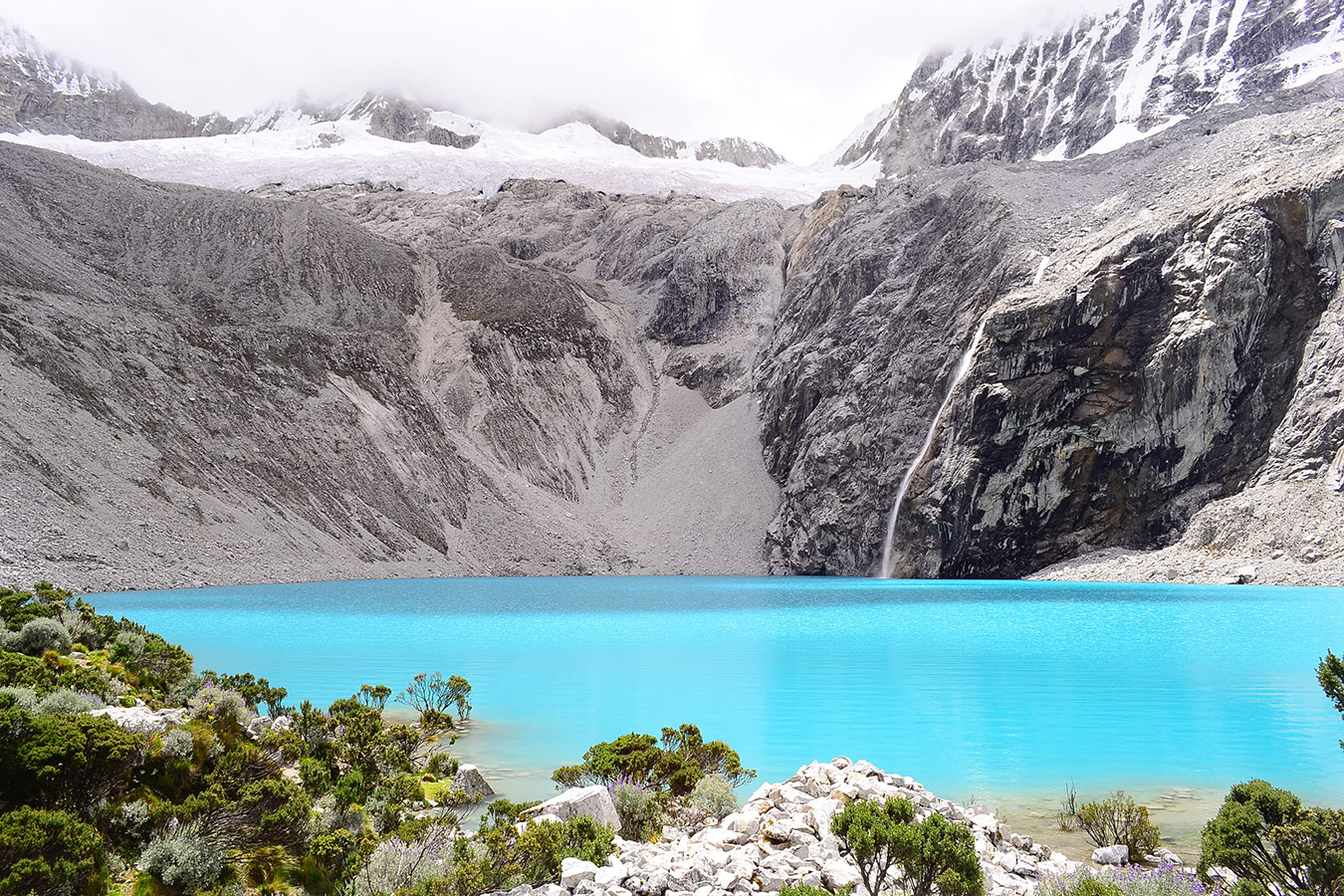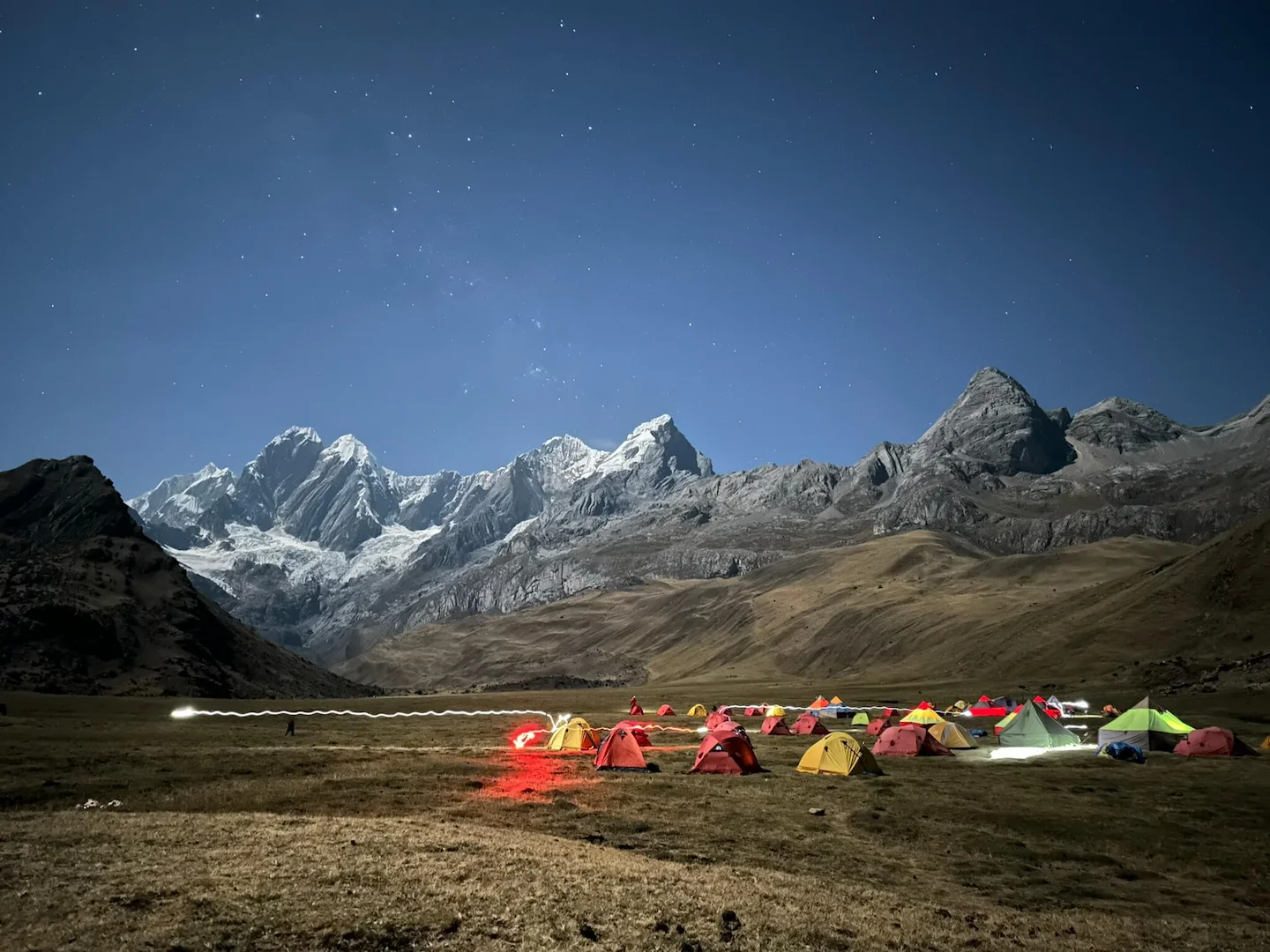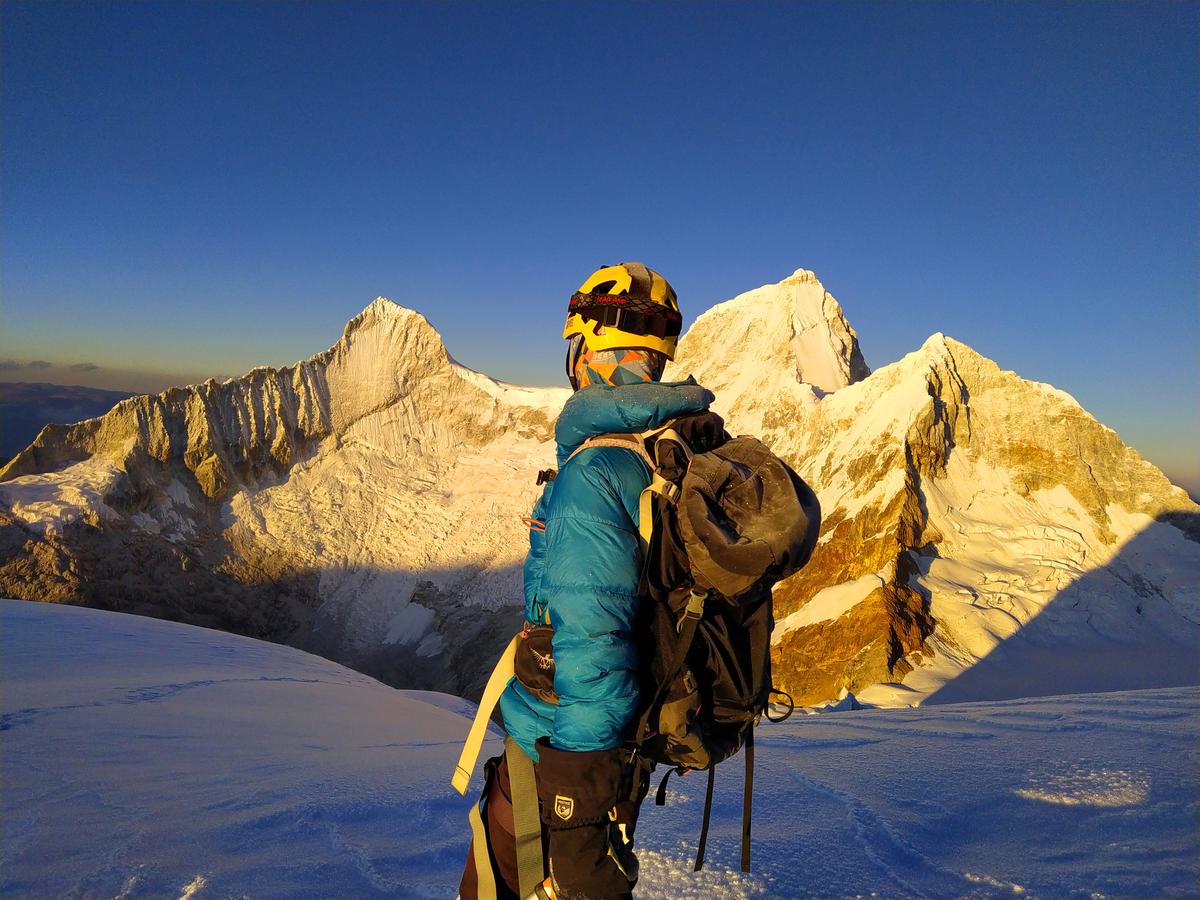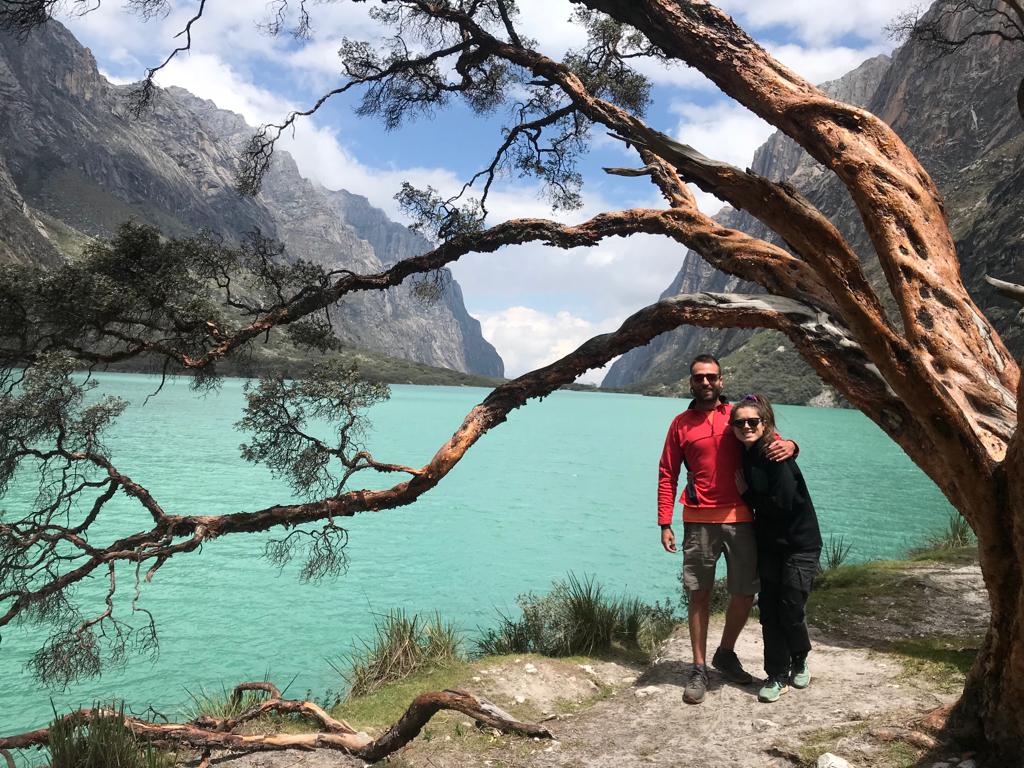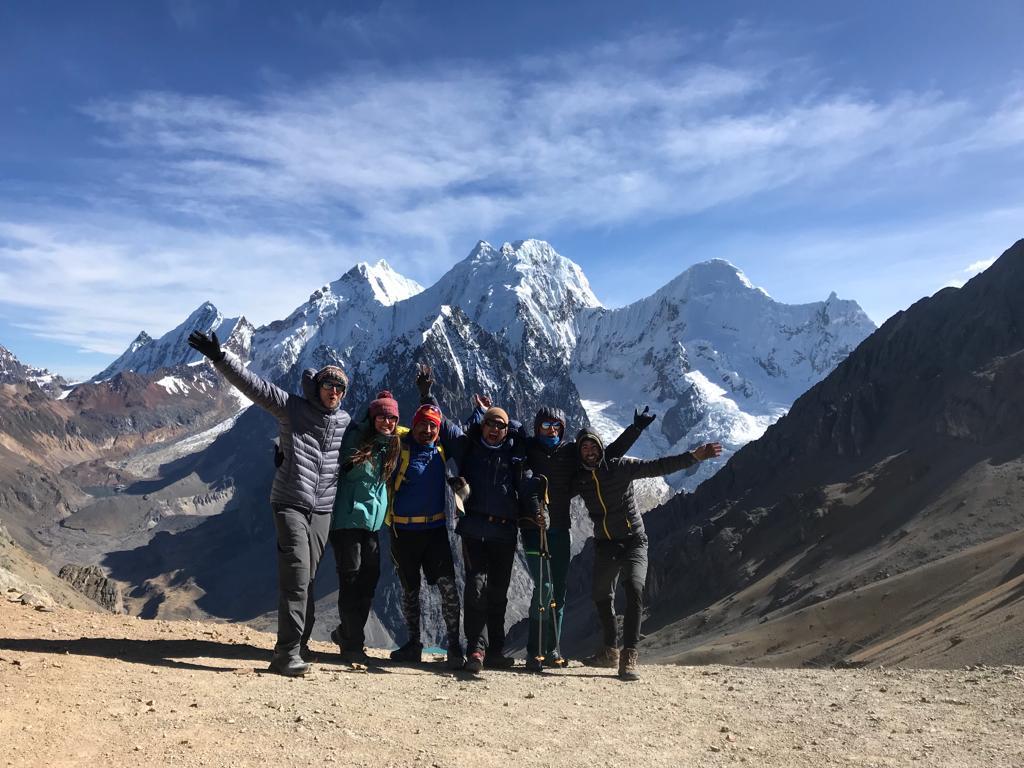The Cordillera Blanca is the most extensive tropical ice-covered mountain range in the world and has the largest concentration of ice in Peru. It is part of the Cordillera Occidental (the westernmost part of the Peruvian Andes), and trends in a northwesterly direction for 200 km between 8°08′ and 9°58’S of latitude and 77°00′ and 77°52′ W of longitude. It has five of the most spectacular peaks above 6,000 m in the Peruvian Andes; the highest peak, Huascarán, rises to an elevation of 6,768 m above sea level. The Cordillera Blanca also acts as a continental divide: the Santa River on the west drains into the Pacific Ocean, whereas the Marañón River on the east drains into the Atlantic Ocean.
Glaciers
Until the 1990s a total of 722 individual glaciers were recognized in this mountain range, covering an area of 723.4 km2. Most were on the western side of the range, where 530 glaciers covered an area of 507.5 km2, while on the eastern side 192 glaciers covered an area of 215.9 km2. Most of the glaciers, 91% of the total, were classified as mountain glaciers (they are generally short and have extremely steep slopes); the rest were classified as valley glaciers, except for one ice cap.
Like all Andean glaciers, the Cordillera Blanca has witnessed a major retreat of its glaciers during the 20th century due to global climate change. Studies have shown a retreat of over 15% since the 1970s. Based on analysis of satellite imagery, in 2003 there were 485 glaciers left, covering an area of 569.6 km2.
Lakes
Among the most important lakes in the range are the Llanganuco Lakes, which are located on the northern side of Huascarán, and are accessible from the town of Yungay; the deep-turquoise Lake Parón (the biggest lake in the Cordillera Blanca), located just north of Huandoy, accessible from the town of Caraz; Lakes Ichiccocha and Jatuncocha,which are near Artesonraju and Alpamayo and are accessible only by trekking or on horseback from Caraz.
Some other notable lakes are Lake 69, Lake Allicocha, Lake Auquiscocha, Lake Palcacocha, Lake Querococha, and Lake Conococha.

